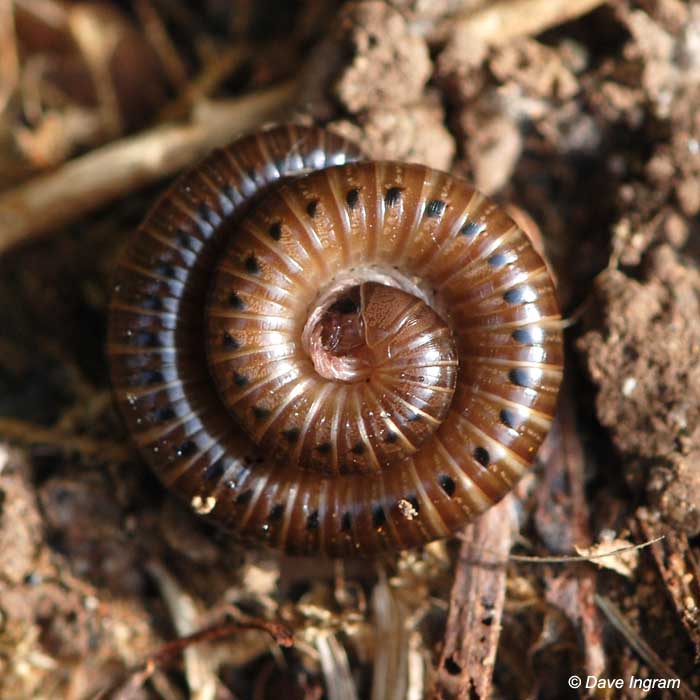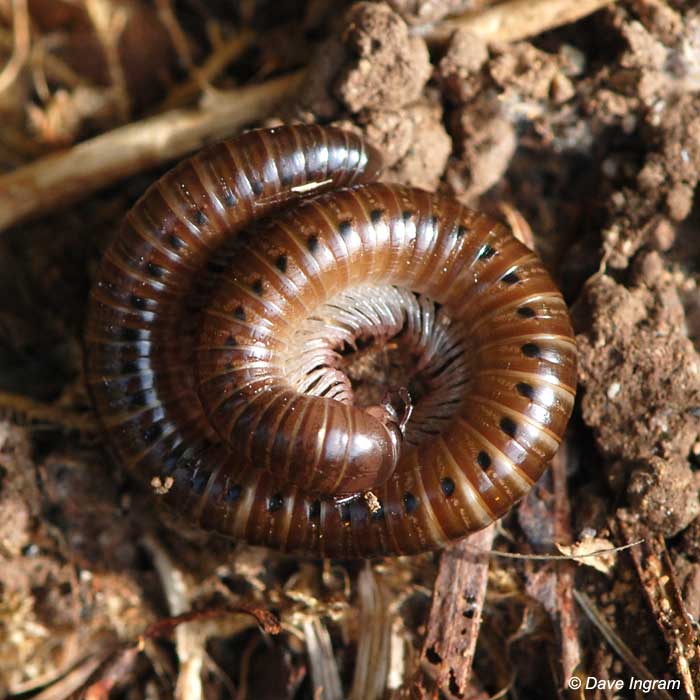I love turning over pieces of wood, bark, leaves, boards and rocks and discovering things lurking underneath. I found this millipede under an old rotting board at my mother-in-law’s house up at Miracle Beach. I’m unsure what species it is but have fairly confidently narrowed down the Order to Julida and Family to Julidae. Being no millipede expert, I’m humble enough to accept opinions to the contrary!
British Columbia has approximately 57 species in Myriapoda (millipedes and centipedes). From a purely visual perspective, this millipede appears to be a Cylindroiulus sp. E-Fauna BC lists two species of Cylindroiulus for the province: C. caeruleocinctus and C. latestriatus so it is possible that this millipede is one of these species. Unfortunately, E -Fauna has no photographs or pages for these two species.
The name millipede means literally “1000 feet.” While many do have a large number of legs, the name is figurative rather than literal. Most millipedes have less than 400 legs, and generally less than 200. The legs are useful to separate millipedes (Class Diplopoda) from centipedes (Class Chilopoda). Millipedes have two pairs of legs on each segment while centipedes only have one pair of legs per segment. In addition, millipedes have short antennae while centipedes have long antennae.
Millipedes are pretty cool to find and observe. I’ll try to search for a few different species to highlight in upcoming blog posts. They’re fascinating creatures and interesting to watch!
Some interesting websites featuring good information on millipedes and centipedes include:
For more reading about invertebrates of all sorts check out the Circus of the Spineless, this month hosted by Marmorkrebs.



